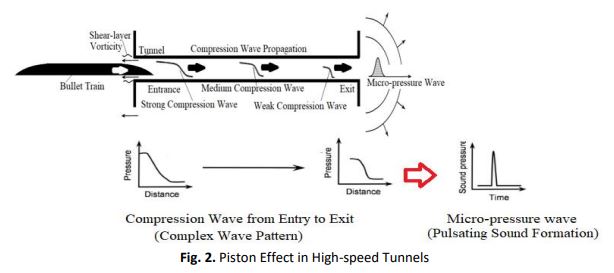Design Intent of Future Tunnels
DOI:
https://doi.org/10.37934/arfmts.88.2.5063Keywords:
High-speed Train, High-speed Tunnel, Pressure Load, Mach NumberAbstract
The sound barrier for bullet trains remains a challenge due to the piston effect causing compression waves at the entry and exit of the tunnel. The air ahead of the train nose is compressed, and the wave propagates through the tunnel at the speed of sound and exits with the generation of micro pressure waves. It gives rise to a complex wave pattern comprising compression at the train nose & expansion at the train tail leading to the positive pressure around the nose and suction around the tail. This is intended to provide exhaustive input for the proper design of a futuristic tunnel. The cross-sectional shapes of the tunnel, whether square, rectangular, circular, or semi-circular, will experience pressure compression wave generated by high-speed train but will influence the flow pattern and hence the compression wave. This paper presents the pressure load on the walls of long and short tunnels for subsonic compressible and transonic flows. The experimental investigation is carried out only for length parameters to study short and long tunnels. Further, flow visualization is also provided after the formation of the sonic boom. The results of this investigation can be an essential data source for optimum design of high-speed tunnels so as to suppress or break the sound barriers, thus, resulting in a safer high-speed train network.
Downloads

































